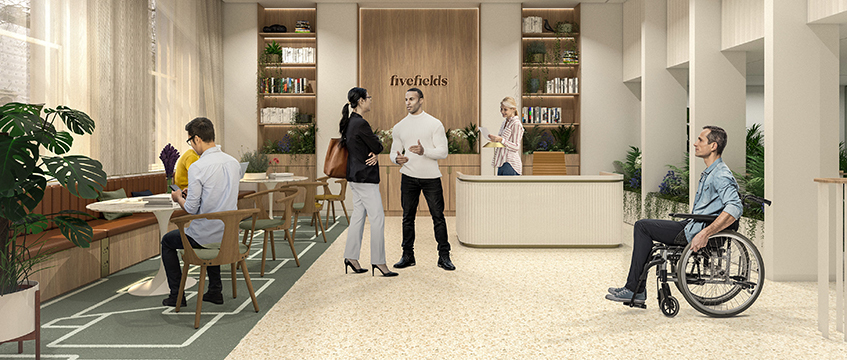Grosvenor and the Crown Estate are leading an industry group which is pushing for meaningful and practical change in the UK’s built environment for those who struggle to access buildings and urban centres.
Their joint report and recommendations, published today, were produced in collaboration with individuals with lived experience of a range of characteristics, including disability and neurodiversity, and has the backing of paralympian Ade Adepitan.
A new working group – Accessible and Inclusive Places Industry Group – has been set up to drive collaboration and change, with several members, including British Land, Lendlease, Cadogan, Landsec and Heathrow, already signing up to the report’s recommendations.
Grosvenor and the Crown Estate are calling for organisations to commit to the following measures:
- Listen to and involve people with lived experience: Understand and engage with those who have lived experience across a range of characteristics.
- Measure: Measure and understand the level of accessibility for existing buildings and spaces to inform key interventions.
- Communicate: Provide better information on the level of accessibility of existing buildings and spaces so people can feel more confident using them.
- Exceed: Go beyond existing building regulations through introducing an inclusive design brief in collaboration with people with lived experience to create a higher inclusive design standard.
- Collaborate: Work with partners to ensure accessibility and inclusive design are considered for both new developments and existing buildings.
One in four of the UK’s 67m people is living with a disability, and thousands more are facing temporary mobility challenges each year.
The report provides open-source tools such as an inclusive design brief which includes technical guidance and a set of prompts for design teams to embed inclusive design throughout the life cycle of a project.
There is also a template for creating an inclusive design panel of people with lived experience which will be used across all new developments within the Crown Estate and Grosvenor portfolios.
Adepitan said: “Creating buildings and places that are accessible and welcoming is more than a functional piece of work; it is a necessity for creating inclusive and thriving communities. We have seen waves of change and progress over recent years but there is still much more to be done – every new development should consider the needs of all citizens, and people with lived experience need to be on the inside of design and decisions to really maximise the potential of inclusive design. Leaders like the Crown Estate and Grosvenor stepping up and showing real commitment in this area helps to set a new standard for others to follow.”
Workshop participant Michelle Goodwin added: “The lack of truly inclusive spaces can make you feel like a second-class citizen. There have been plenty of times when I have tried to enter shops claiming to be accessible where I have been unable to get my wheelchair through the door. It’s refreshing to find organisations that are actually listening to the experiences of people in the real world, and going out of their way to make practical changes that have a positive impact”
Simon Harding-Roots, the Crown Estate’s managing director for London, said: “This important work, the calls to action and tools are relevant for all buildings and places across the UK. However, in London we have a specific opportunity given the historic buildings we look after. Creating an inclusive, accessible and welcoming offering is at the heart of our London strategic vision and we are focused on supporting London’s renewal, to provide a diverse offering to a wider range of people and businesses.”
Amelia Bright, executive director of the London estate at Grosvenor, said: “When we started investigating the issue of accessibility and inclusion in the built environment we found many barriers, but also a groundswell of interest in solutions.
“Working with innovators and those with lived experience we are proud that the recommendations in this report and working group have already gained the backing of so many in the industry. This is an important step in delivering on our commitments to support community wellbeing and business growth, which will help our buildings and spaces become more welcoming and successful long term.”
The report points to an important need for the industry to improve the inclusivity of buildings and public spaces and outlines the value, as well as the moral, case for action. It concluded that by enabling all those that interact with buildings and spaces to feel welcome, the industry can further future-proof the built environment. This could also quadruple customer bases. address business ESG objectives and unlock a wider talent pool.
Send feedback to Julia Cahill
Follow Estates Gazette











